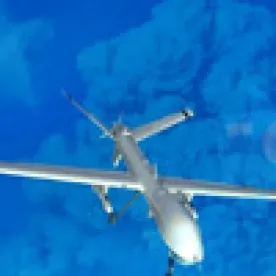Recently, the Federal Aviation Administration (FAA) published in the Federal Register its Notice of Proposed Rulemaking focused on the Operation and Certification of Small Unmanned Aircraft Systems (UAS) or “drones” within the United States. The publication in the Federal Register starts the clock on the 60-day comment period, which at this point ends on April 24, 2015. My recent blog outlined the FAA’s general framework for the UAS ANPR, including the main operating limitations.
Today, I’ve listed below some of the major areas where the FAA is seeking input from stakeholders, including Risk Mitigation, Line-of-sight, Payload, International, Size Class, Crewmember, Testing Site, and other issues. Among other things, the FAA is looking for comments on the feasibility of its proposal, alternatives, any new technology that could inform its decision, data and studies.
The FAA specifically is seeking comment on:
Risk Mitigation
How can the final rule effectively mitigate the risk of operations of small unmanned aircraft during low-light or nighttime operations?
Should the FAA require flight termination system or other technological equipage and how should such technology be integrated into the aircraft for small UAS that would be subject to this proposed rule?
Should the horizontal boundary of the contained area of operation be defined through a numerical limit and what that limit should be?
Should the FAA permit small UAS operations from moving land-based vehicles, and if so, what type of regulatory framework is needed for such operations?
Should the FAA maintain, raise or lower the proposed 500-foot ceiling?
Should the FAA maintain, raise or lower the proposed speed limit of small unmanned aircraft of 87 knots (100 mph)?
What are the costs and benefits of requiring small UAS operators to perform maintenance and inspections pursuant to existing FAA regulations?
Line-of-sight
The FAA is seeking information as to technologies and operational capabilities or procedures needed to allow UAS flights beyond visual line of sight, and how such technologies, capabilities and procedures could be accommodated under the final rule or in a future rulemaking.
Are there well-defined circumstances and conditions under which operation beyond the line of sight would pose little or no additional risk to other users of the NAS, the public, or national security?
Are there additional requirements that could be specified in ways that are more performance-oriented in order to minimize any disincentives to develop new technologies that achieve the regulatory objectives at lower cost?
Should the final rule relax operating restrictions on small UAS equipped with technology that addresses the concerns underlying the operating limitations of this proposed rule, for instance through some type of deviation authority (such as a letter of authorization or a waiver)?
Are there other ways in which a first-person-view device could be used by the operator without compromising the risk mitigation provided by the proposed visual-line-of-sight requirement?
Should the FAA permit operations beyond visual line of sight in its final rule, for example through deviation authority, once the pertinent technology matures to the extent that it can be used to safely operate beyond visual line of sight?
UAS Payload Questions
Should UAS be permitted to transport property for payment within the other proposed constraints of the rule, e.g., the ban on flights over uninvolved persons, the requirements for line of sight, and the intent to limit operations to a constrained area?
Should a special class or classes of air carrier certification should be developed for UAS operations?
Should external-load UAS operations and towing UAS operations should be permitted, whether they would require airworthiness certification, whether they would require higher levels of airman certification, whether they would require additional operational limitations, and on other relevant issues?
International Considerations
Should foreign-registered small unmanned aircraft be included in the new framework?
Does the proposed rule need to be modified to ensure that it is consistent with any relevant obligations of the United States under international agreements?
What foreign experiences in UAS regulation should the FAA consider?
Questions as to Size Classes of UAS:
Should the regulation of small UAS be further subdivided based on the size, weight, and operating environment of the small UAS?
Should the FAA eliminate frangibility from the micro UAS framework?
Should the micro UAS classification be included in the final rule, and what are the provisions the FAA should adopt for such a classification?
What is the risk to other airspace users posed by the lesser restricted integration of micro UAS into the NAS?
Crewmember Considerations
Is it appropriate for the FAA to propose not to provide an operator with the emergency powers available to the PIC under § 91.3(b)?
Should the FAA create a separate operator-in-command position for small UAS operations?
Would the rule cause confusion in existing terminology if the FAA created a new crewmember position as an “operator”?;
Should the visual observer be required to stand close enough to the operator to allow for unassisted verbal communication?
Should the FAA require an airman certificate to serve as a visual observer and what requirements should an applicant meet in order to obtain a visual observer airman certificate?
Testing Site Program
How can the FAA improve or further leverage its test site program to encourage innovation, safe development and UAS integration into the NAS;
Other Questions from the FAA
Should the FAA create a new category of airman certificate for small UAS operators?
Should applicants for an aircraft operator certificate be required to demonstrate flight proficiency and/or aeronautical experience? If so, what flight proficiency and/or aeronautical experience requirements should the FAA impose?
Should the FAA require passage of an FAA-approved training course instead of or in addition to the proposed knowledge test?
What areas of knowledge should the FAA test on the initial knowledge test?
Should the FAA require a recurrent knowledge test that is given every 24 months?
Should non-military COA pilots be permitted to take the recurrent knowledge test instead of the initial knowledge test in order to obtain an unmanned aircraft operator certificate?
FAA invites comments as to whether small unmanned aircraft owners should be required to provide additional information during the registration process.
Should a small unmanned aircraft be required to display its registration number in accordance with Subpart C of part 45? If not, what standard should the FAA impose for how a small unmanned aircraft displays its registration number in order to fulfill its safety oversight obligation regarding small unmanned aircraft operations?
Should small UAS accidents that result in minimal amounts of property damage should be exempted from the accident reporting requirement?
Is the FAA correct to conclude that small UAS operations would not pose a threat to national security?
Is the FAA correct to conclude that an airworthiness certification is unnecessary for small UAS subject to this proposed rule?
What are the positive economic impacts of the proposed rule?



 />i
/>i
